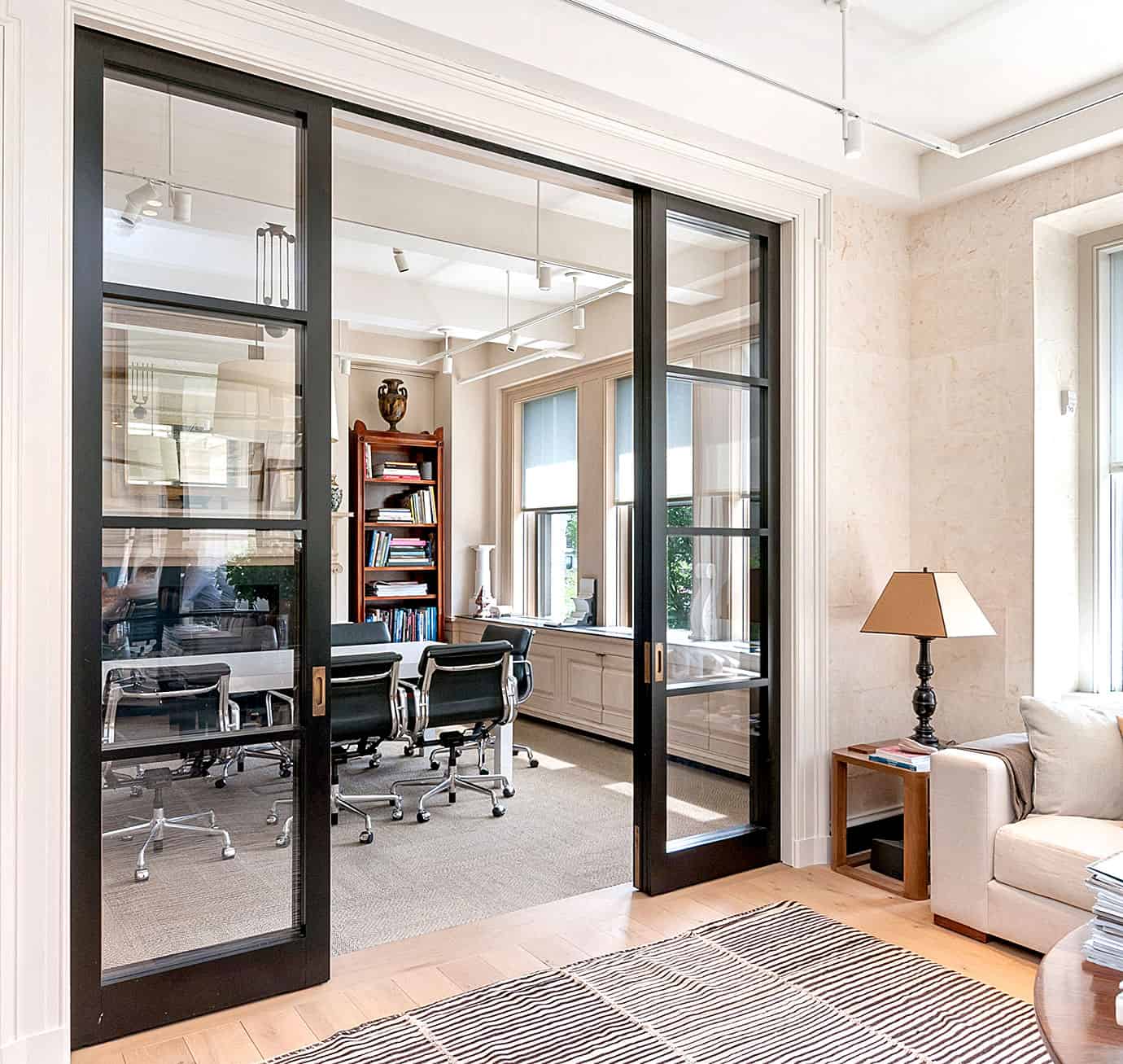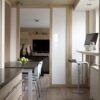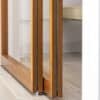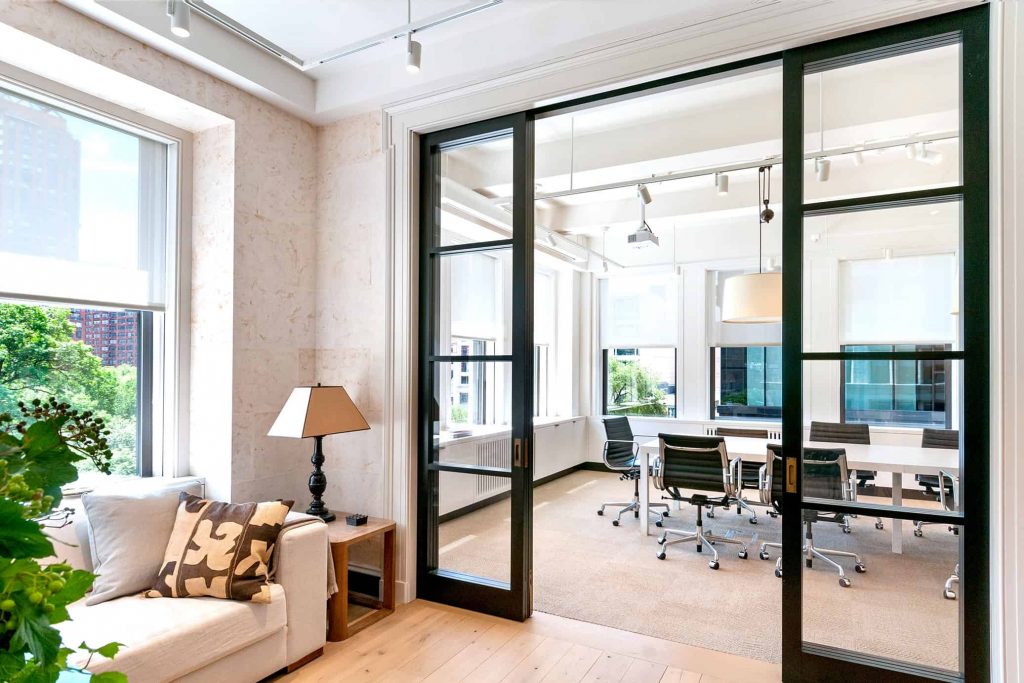
Saving Space
Aesthetic considerations aside, there are some genuine functional advantages to sliding doors in certain situations that may add to your design considerations in using one. Perhaps the most obvious advantage to a sliding door is that clearance issues in places like a narrow hallway that may make using a traditional swing door difficult or impossible may be solved by using a sliding door instead. Typically a sliding door will operate very closely to an opening and adjacent wall, eliminating the need for the broad arc that a swing door would travel through.
By not being mounted to the jamb as a hinged door would be, a sliding door opens up options in finishing a doorway. Want something without trim for a cleaner, more modern look? A sliding door makes that much easier. It also allows you to suspend the weight of a door differently – in the instance of a very thin wall built with steel studs, doorways often require extra reinforcement to cope with the weight and operating forces of a swinging door. A sliding door could allow you to transfer that to the framing above a ceiling where you may have joists that may be better at withstanding that load. It’s important to note that many sliding doors do not require a floor track – this means you can avoid creating a threshold or cutting your floor thereby avoiding a trip hazard.
Easy Way to Retrofit
If you have a low ceiling where building down a header may be difficult, or where aesthetically you just don’t want a separation between the ceiling of one room and the next, a sliding door allows a nearly seamless transition from one space to another. Sliding doors often offer the option of soft-closing and opening which may reduce the worry of pinched fingers – any parent (or pet-owner) would consider that an advantage. In mentioning slamming doors, something most people may not be aware of is that sliding doors offer extremely quiet operation. There are no squeaky hinges to oil and most types of sliding hardware are maintenance free. They also offer longevity – most reputable products will have been cycle-tested to ensure operability for ages without issues.
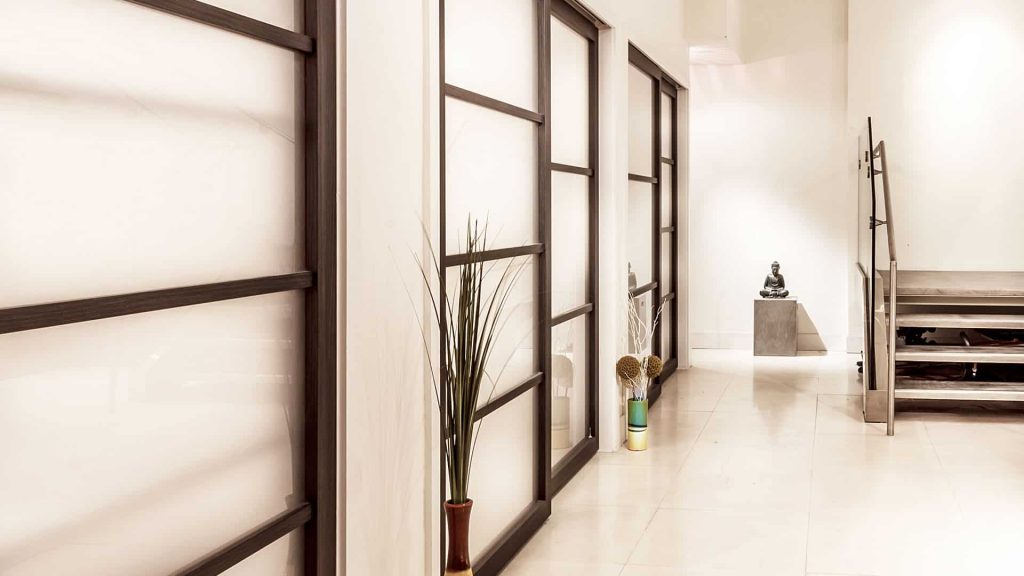
Large openings are another area where sliders can sometimes hold an advantage. Imagine a swinging door 4 or 5 feet wide – with more weight hanging further away from the hinges, the hinges are subject to greater stress. Sliders don’t suffer that issue and can be easier to operate through their range of motion when dealing with large doors. There are also numerous ways to link sliding doors to cover much larger openings.
In dealing with older homes and buildings or any place that has jambs that might be less than straight and plumb, a sliding door can be a bit more forgiving to install. While you’ll need to have your track level, operating in front of an opening (as a sliding door does) may save you from having to correct for issues with jambs. If you have older woodwork that you’d like to preserve, not having to drill a bunch of holes and mortise with a chisel can save original details of a home.
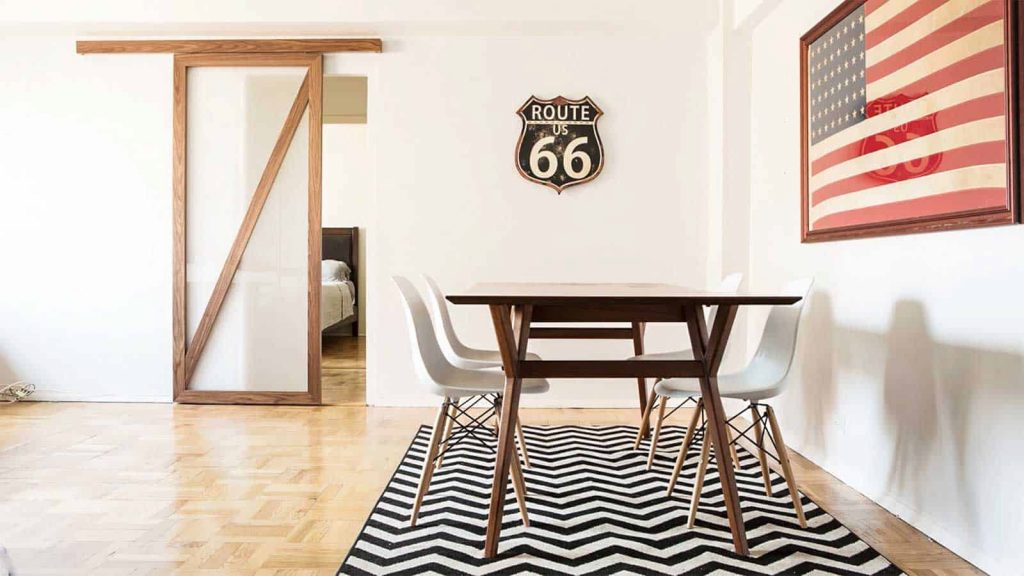
Functional Solutions
While a sliding door is not necessarily suited to every opening and every function, there are certainly numerous benefits for many situations. It pays to examine your site conditions and weigh your options as sliding doors can sometimes provide unexpected answers to design problems.
See our inspiration gallery or find us on houzz to find more inspiration for installing sliding doors or walls in your next project.
